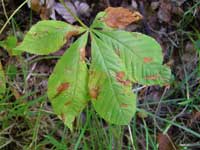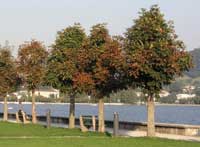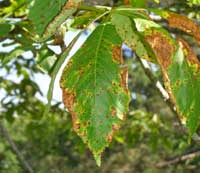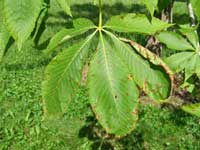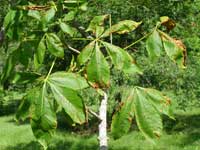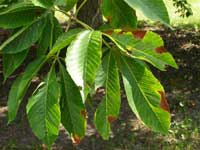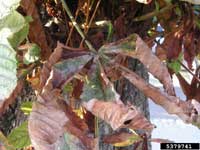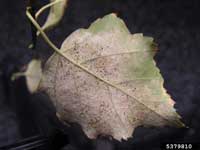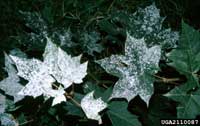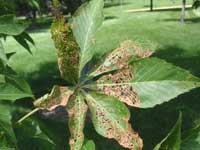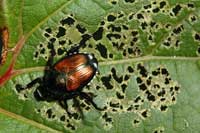Extension > Garden > Diagnose a problem > What's wrong with my plant? > Deciduous > Buckeye > Spots or blotches on leaves
Buckeye > Leaves > Spots or blotches on leaves
1 of 5
Leaf blotch
Guignardia aesculi
- Irregularly-shaped, reddish brown blotches with yellow border on leaves
- Leaves curl and become deformed around leaf spots
- Reddish-brown spots may be visible on leaf petioles and immature fruit
- Leaves may drop prematurely if infection is severe
- More information on Leaf blotch
2 of 5
Anthracnose
Glomerella cingulata
- Leaf veins, mid rib and petioles turn brown
- Round to irregular brown spots develop near leaf veins
- Most severe on trees stressed by heat, drought, nutrient deficiency or other conditions
- More information on Anthracnose
3 of 5
Leaf scorch
- Leaf margins turn reddish brown and may curl
- More noticeable in last half of summer
- Most common on leaves exposed to sun and wind than sheltered leaves
- Severely affected leaves drop prematurely
- More information on Leaf scorch
4 of 5
Powdery mildew
Phyllactinia gutttata
- White-gray, felt-like spots or patches on leaves
- Infected leaves may curl, twist or fold upwards
- Infected blossoms are distorted, discolored and covered in white powdery fungal growth
- Lower shaded leaves and small understory trees are most commonly affected
- More information on Powdery mildew
5 of 5
Japanese beetle
Popillia japonica
- Skeletonizes leaves, i.e. chews leaf tissue between the veins creating a lacelike appearance
- Damaged areas turn brown
- Attacks are common in sunny locations starting at the top of the tree and working down as they feed
- Adults are a metallic green; bronze wings; 5 white tufts of "hair" along their sides and two white tufts on the tip of the abdomen
- More information on Japanese beetle




